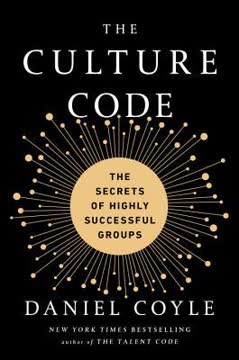Key Takeaways
1. Master the Art of Difficult Conversations
it’s not w hat you say but how you say it that counts.
Focus on delivery. The effectiveness of a tough conversation hinges more on your tone, empathy, and respect than the specific words used. Approaching discussions with compassion encourages a similar response from the employee, even in confrontational situations.
Leverage guilt, not anger. Anger is external and provokes defensiveness; guilt is internal and encourages self-reflection and accountability. Frame issues using "I feel" or "my perception" to invite the employee to take responsibility for their actions or the situation.
Honesty and perception. Be honest about your observations and feelings, using "perception" as a neutral tool ("my perception is..."). This avoids accusations and allows the employee to understand how their behavior is viewed by others, which is crucial for growth and avoiding future issues.
2. Address Personal & Cultural Sensitivities with Tact
Respect, dignity, and cooperation are the cornerstones for handling even the most uncomfortable workplace scenarios.
Handle privately and respectfully. Issues like appearance, hygiene, or cultural practices require private, sensitive discussions. Frame the conversation around the impact on the workplace, coworkers, or clients, rather than personal judgment.
Focus on business impact. Link the personal issue to legitimate business concerns, such as client perception, coworker comfort, or productivity. For example, inappropriate dress or strong food odors can disrupt the work environment.
Seek collaboration and support. Involve the employee in finding solutions or compromises. For complex issues, especially those potentially related to medical conditions (ADA) or protected characteristics (religion, national origin), involve HR or legal counsel to ensure a legally sound and sensitive approach.
3. Tackle Performance Shortcomings Directly
Your job isn't to retool the employee with basic life skills; your role will be to point the individual in the right direction as far as acquiring the appropriate skills, while insisting that work productivity continues at an expected level.
Address specific behaviors. When performance lags (quality, quantity, skills), provide concrete examples of the shortcomings. Avoid vague criticisms and focus on observable actions or lack thereof.
Seek employee self-diagnosis. Ask the employee for their perspective on the problem and what they believe is causing it. This encourages accountability and often reveals underlying issues or misunderstandings.
Set clear expectations and offer support. Define what successful performance looks like and outline specific steps for improvement. Offer resources like training, coaching, or tools, but place the responsibility for improvement squarely on the employee.
4. Enforce Policies Consistently and Clearly
If you’re inconsistent in the application of your organization’s rules, a judge or arbitrator may determine that your fickle actions could justify a claim of wrongful termination, discrimination, or retaliation from a terminated worker.
Communicate rules proactively. Inform employees about company policies and procedures (safety, attendance, internet use, etc.) upfront, explaining the rationale behind them (e.g., safety risks, legal liability, productivity).
Apply policies consistently. Inconsistency in enforcing rules can create legal risk and damage morale. While context matters (e.g., occasional vs. habitual tardiness), the standard for addressing violations should be applied fairly across the board.
Document and outline consequences. For repeated or significant violations, document the issue in writing (e.g., written warning). Clearly state the policy violated, the specific incident(s), the expected improvement, and the consequences of future violations, which often follow a progressive discipline path.
5. Confront Offensive Behavior Decisively
Any incident where a worker is abused, threatened, intimidated, teased, or ridiculed could be grouped under the category of intrusive and harassing behaviors, and such emotional and psychological violence should be taken very seriously in your organization.
Take complaints seriously. Address any report or observation of offensive behavior (harassment, discrimination, bullying, aggressive conduct) immediately. Failure to act can expose the company to significant liability.
Investigate thoroughly. Involve HR, and potentially legal counsel or security, to investigate the allegations objectively. Gather facts and hear all sides before making a determination.
Address behavior firmly. If misconduct is confirmed, address the offending employee directly and unequivocally. Emphasize the impact of their behavior on coworkers and the work environment, and clearly outline severe consequences, which may include accelerated progressive discipline or immediate termination depending on the severity.
6. Cultivate Effective Workplace Communication
Communication is a two-way street: It’s not just about giving information, but it’s also about receiving and digesting new information that propels the next step in the business process.
Coach on core skills. Address deficiencies in listening, upward communication, and information sharing. Use specific examples to illustrate the impact of poor communication on workflow and team effectiveness.
Address negative communication styles. Confront behaviors like whining, complaining, gossiping, or snitching by explaining how they damage morale and trust. Frame the discussion around the employee's perception and its negative impact on the team and their own career.
Manage information flow carefully. Be cautious about confidential requests from employees who report to others. Understand the risks of being placed on notice of potential issues without the ability to act, and involve HR or senior management appropriately.
7. Coach Managers on Leadership Style
If you’re playing this management game correctly, then your life should get easier over time: You’ll work less hard, make more money, and develop satisfaction in seeing others thrive while assuming new responsibilities that you can now delegate.
Provide candid feedback. Address challenging managerial styles (e.g., avoiding confrontation, being overly critical, lacking creativity, being risk-averse) using specific examples and focusing on the perception created and the impact on the team.
Link style to business results. Explain how a manager's style affects team morale, productivity, retention, and ultimately, the department's contribution to the company's goals. Highlight the benefits of adopting more effective leadership approaches.
Encourage self-assessment and development. Ask managers to reflect on their own style, perhaps comparing themselves to past role models. Offer support through training, coaching, or mentorship, but emphasize that changing detrimental behaviors is their responsibility for their own career growth.
8. Implement Progressive Discipline Thoughtfully
As such, the progressive discipline process ensures that your company acts reasonably and consistently and documents the effects of the worker’s unwillingness or inability to do the job adequately.
Follow a structured process. Use a series of escalating steps (verbal counseling, written warning, final written warning) to address performance or conduct issues. This provides the employee with notice and opportunity to improve.
Ensure due process. Before issuing formal written documentation, whenever possible, meet with the employee to hear their side of the story. Incorporate their perspective into the written warning to demonstrate a fair and thorough investigation.
Utilize decision-making leaves. For persistent issues that haven't responded to verbal coaching but don't yet warrant a written warning, consider a paid day of contemplation. This encourages the employee to reflect
[ERROR: Incomplete response]
Last updated:
Review Summary
101 Tough Conversations to Have with Employees receives mixed reviews. Some find it an invaluable resource for managers, providing guidance on various workplace situations. Others criticize it as outdated, inappropriate, and potentially damaging to employee relationships. Positive reviews praise its comprehensive coverage and usefulness as a reference tool. Negative reviews highlight concerns about the book's tone, unrealistic scenarios, and lack of depth in addressing complex conflicts. Many readers suggest adapting the advice to fit modern workplace cultures and using it as a starting point rather than a strict guide.
Similar Books










Download PDF
Download EPUB
.epub digital book format is ideal for reading ebooks on phones, tablets, and e-readers.




